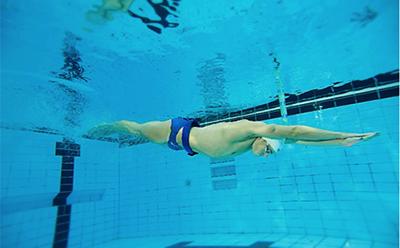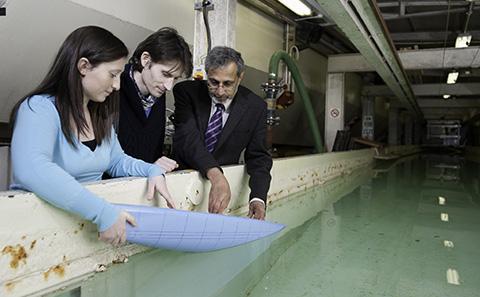Optimising sporting performance
Providing the competitive edge
In the world of elite sport the difference between winning and losing can come down to the narrowest of margins. Increasingly, teams are looking to science and technology to provide them with the competitive edge, and engineering researchers at Southampton have been working alongside elite teams in an effort to extract every last ounce of performance from body and machine.
A long-standing working relationship with the Research and Innovation team at the English Institute of Sport has seen many athletes put through their paces, with cyclists, swimmers, sailors, and Skeleton sliders all having benefitted from our world-leading facilities and research.
Developing new tools for swimmers
Research fellow Dr Joe Banks’ work studying hydrodynamic force as the body moves through water has been instrumental in developing new tools to enable coaches to deliver the best advice to athletes.
Joe is now supervising PhD students as they develop his research, using models of the muscular and skeletal system to study kinematics and stroke dynamics. “From that you can work out how much energy and power is needed to generate that motion against the fluid forces. Essentially trying to assess both what the body can do and what the generated fluid forces are. This is an important area we want to develop further in the future.”

You get to see the direct impact that you are having on a sport and on individual athletes and that is really incredible to see.
Optimising hydrofoils
Joe’s research has also helped improve the performance of elite sailing craft. Specifically, Joe’s study of the hydrofoils used by the America’s Cup teams is exploring how their performance changes when they are deformed by the fluid forces.
As the only part of the boat left in the water when the vessel rises off the surface, hydrofoils are critical to performance, says Joe. “Our long-term research goal is that the deformation of the structure is used to improve the performance of the foil over a wide range of fluid loading,” he explains.
“So rather than having to constantly control and change the foil to optimise performance the structures passively adapt their shape by being able to twist or adapt to give a better performance.”
Olympic aims
One of a group being supervised by Joe, PhD student Laura Marimon Giovannetti spent a year with the Land Rover BAR team (Ben Ainslie Racing, now known as INEOS Team UK) as an intern running simulations around designs aimed at making the foils more efficient.
According to Laura, her placement has not only helped her further her career in the study of ship science, but it has also helped in her ambition to be an Olympic sailor herself.
“I came to Southampton to study ship science because it was the best in the world. It was my dream come true to be a ship scientist and being an international level sailor myself it has benefited my campaign for Tokyo 2020.”
Laura and the rest of Joe’s PhD team continue to work with him as they take their research into the field of improving sailor performance.
“We invest highly in our PhD students and through our work we are certainly world leading in terms of performance sports engineering,” Joe says.
“On a personal level you get to see the direct impact that you are having on a sport and on individual athletes and that is really incredible to see.”
More about Joe's research
You may also be interested in:

Personalised sensors for medical tests
Paper-based sensor could test for multiple conditions without the need to visit the doctor

Future-proofing our oceans
Conserving ocean spaces and developing the ships and naval vessels of the future

Creating a sea change
Informing policy on the conservation of coral reefs
